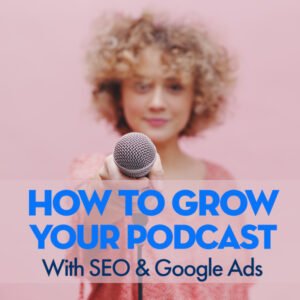Why should I use podcast transcriptions?
Why should I use podcast transcriptions? In this post, getting to grips with podcast transcriptions.
Podcast transcriptions are your No.1 tool for driving natural search traffic to your website. Having a transcript of a podcast episode can make it easier for people to find the episode online, as search engines can index the text of the transcript.
To make the most of transcriptions you'll need to:
- Create a unique post or page for each podcast episode.
- Research a unique set of keywords for that episode and use them in slug, title, text and image "alt" tags (alternative description).
- Embed the episode audio on that page.
- Include the episode transcript on that page.
How much of a podcast episode should I transcribe?
There is no specific amount of text that a webpage should have to rank well in search results and Google doesn't give a specific word count. But as a rule of thumb, it's important to have enough text to effectively communicate the content and purpose of the page to both search engines and users.
Too much text! Transcribing long podcasts
A 30-minute long podcast contains 5400 words. In my opinion, this is just too large a transcription to be practical, especially if you do a half-hour weekly show. Attempting this would be the equivalent of editing a novel every six weeks. This is because all transcription techniques, even the automated ones (which we'll get on to), require you to do some manual sense and spell-checking. 5400 words per transcription is just too much work.
Instead, I suggest identifying a key 5 minutes of your episode, about 900 words and transcribing that. Choose the most relevant and informative part of the episode, where the show's key themes are explained or discussed. Quite often this will be the first 5 minutes.
Create and include subheadings
It's good SEO to give your transcription a title and subheadings. Again use a version of your keyword theme, for example:
Your podcast episode title or keyword theme - Podcast transcription
Also, look to break up the transcription text and add useful subheadings or chapter markers that follow your keyword theme for example:
- How to (your keyword theme)
- (Your keyword theme) explained
- Guest (name) discusses (your keyword theme)
Headings coding Tip! Whichever platform you decide to use to build your podcast website, you will be able to use HTML code snippets to help Google read your headings.
HTML heading tags, such as <H1>, <H2>, <H3>, are used to create headings and subheadings on a web page. These tags are used to indicate the importance and structure of the text they contain. These tags aren't visible on the published page but your webpage publishing tool will give you the option to assign them.
To use these tags, you simply place the text you want to be a heading or subheading inside the opening and closing tags, like this: <H1>heading text goes here</H1>
The <H1> tag is the most important heading tag and is usually used for the main title or heading of the web page. It is typically the largest in size and boldest in style. For example, if you are creating a blog post, the title of the blog post would be wrapped in an <H1> tag.
The <H2> tag is used for subheadings and is slightly smaller in size and less bold than the <H1> tag. For example, if you have a section in your blog post called "Introduction", it would be wrapped in an <H2> tag.
The <H3> tag is used for sub-subheadings and is smaller and less bold than the <H2> tag. It can be used to further organize the content of your web page.
There are also <H4>, <H5>, and <H6> tags available, I've never used them but these tags are used for even more specific subheadings, with H6 being the least important heading tag.
Keep in mind that it's important to follow a hierarchical structure in using these tags, starting with H1 as the main heading, then H2 for the subheading, H3 for the sub-subheading, and so on.
Add a link to relevant content
It's good SEO practice to add a link at the very end of your transcription. Make this to a high-ranking webpage that features information very close to your content. For example, if your podcast episode is about Red Admiral butterflies include a link to a Wikipedia page about them. Make sure this page has lots of additional relevant content and lots of text. It's thought this can signal to Google that your episode page follows a similar theme. It's also useful for people visiting your site.

Introduction: How to grow your podcast
Get started with podcast SEO
Using Keywords to improve podcast website SEO
- Google Ads tutorial - Discover keywords for your podcast
- Answer the Public tutorial - Is your podcast answering people's questions
- Put your podcast keywords to work
Get to grips with podcast transcriptions
- Why should I use podcast transcriptions
- Software to transcribe your podcast - Coming soon